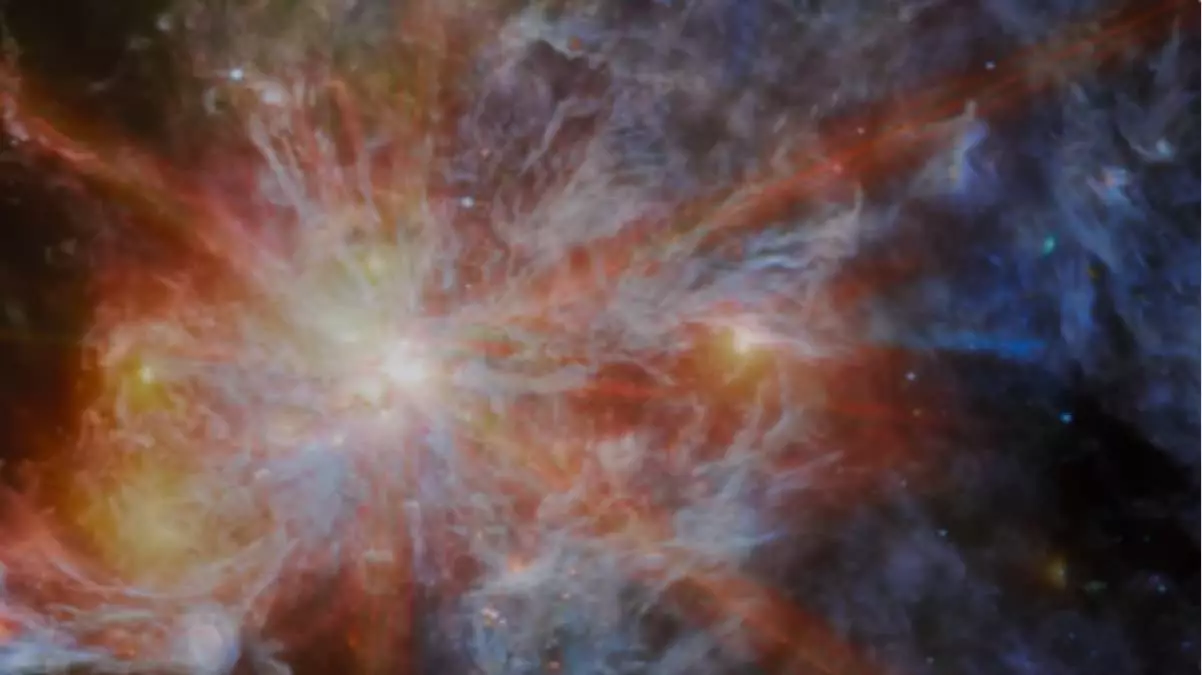In an exciting development that could alter our understanding of cosmic history, the James Webb Space Telescope (JWST) has reported the discovery of five potential galaxies that formed a mere 200 million years after the Big Bang. Situated approximately 13.6 billion light-years away from Earth, these galaxies represent some of the earliest structures in the universe, providing researchers with a tantalizing glimpse into its formative years. The findings, shared on the arXiv preprint server on November 26, are still subject to peer review, leaving room for further exploration and validation.
The Galactic Legacy Infrared Midplane Survey Extraordinaire
This significant discovery is part of the Galactic Legacy Infrared Midplane Survey Extraordinaire (GLIMPSE) initiative, a project aimed at unlocking the mysteries of the universe’s earliest epochs. The JWST, equipped with advanced infrared detection capabilities, is uniquely positioned to explore this domain, unlike its predecessor, the Hubble Space Telescope. By detecting redshifted light from ancient galaxies, JWST endeavors to push the boundaries of observational astronomy and enhance our understanding of galaxy formation in a nascent universe.
The Role of Gravitational Lensing
A notable technique employed by the research team involves gravitational lensing, a phenomenon predicted by Einstein’s general relativity. This cosmic phenomenon occurs when the gravitational field of a massive object, in this case, a galaxy cluster dubbed Abell S1063, bends the light from objects behind it. This natural magnifying effect enabled the JWST to uncover faint signals that might otherwise remain imperceptible, allowing astronomers to observe these distant galaxies more clearly.
If validated, these potential galaxies could predate the previously known earliest galaxy, JADES-GS-z14-0, by approximately 90 million years. This remarkable leap in the timeline raises numerous questions about the state of the universe during its formative phase. The arrangement of these galaxies in proximity suggests a region rich in early galactic structures, indicating a potentially bustling environment within the universe’s initial stages. Furthermore, the rapid formation of these galaxies prompts discussions around theories that involve the influence of supermassive black holes, supernova activity, or even dark energy in shaping early cosmic structures.
The JWST’s findings underscore its transformative role in astronomical research, paving the way for future investigations into cosmic history. As researchers delve deeper into the properties and behaviors of these ancient galaxies, they may uncover essential information regarding the rapid assembly of matter during the cosmic dawn. This discovery serves as a testament to the potential of modern technology in unraveling the complexities of the universe, providing hope for even more extraordinary revelations in the near future.
The James Webb Space Telescope’s observations have pushed the frontiers of our knowledge about the early universe, allowing us to revisit and challenge long-held theories regarding galaxy formation and cosmic evolution. As the scientific community continues to analyze these findings, the implications for our understanding of the cosmos remain profound, demonstrating the immense impact of technological advancements in astronomy.

